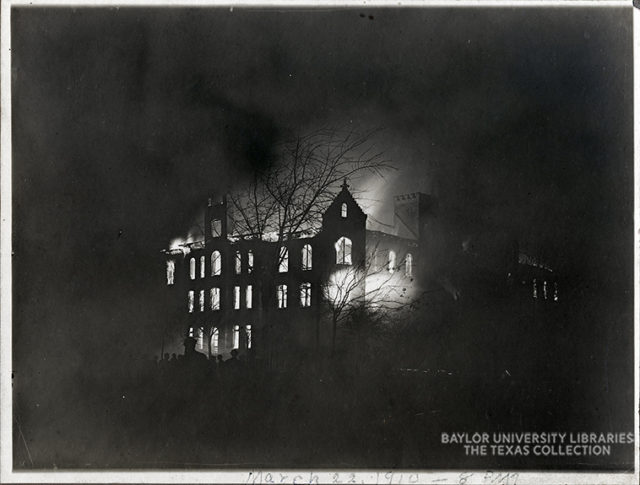By Caitlin Erramouspe | Reporter
Baylor University was founded in Independence in 1845, but made the move to Waco in 1886. Baylor wasn’t the only Christian university in Waco during the late 1800s, though. Texas Christian University (TCU), then known as AddRan Christian University, moved to the city in 1895.
Dr. Stephen Sloan, associate professor of history and the director of the Institute of Oral History at Baylor, is also the creator of Waco History, a website and mobile application dedicated to telling the local history of Waco.
In 1895, Waco made the largest bid to TCU: a plot of 15 acres and the deed to the Waco Female College building.
Sloan said this was “one of the largest instructional buildings in the state at the time it had been built, but [was] abandoned when Waco Female College went out of business.”
When TCU arrived in Waco, Baylor sent their most well-known representative to greet them.
“They had a formal welcome program at First Baptist Church, where local leaders welcomed the leaders of AddRan to Waco, and probably the biggest speaker that they had there was Rufus Burleson, who was president of Baylor at the time,” Sloan said.
Waco was one of the most prosperous cities in Texas, Sloan said. The city had a railroad station with seven connections, and the Brazos River, along with its centrally located placement in the state, contributed to its success.
The rivalry between Baylor and TCU didn’t begin until 1899 when they tied 0-0 in their first football game. The animosity had nothing to do with the fact that both schools were Christian because many schools had some sort of religious affiliation at the time, Sloan said.
So, what ran the Horned Frogs out of Waco?
“It was ultimately the fire in that building that doomed TCU’s future here because at that point several different cities made bids for assistance to the school and Waco’s bid was far less than what Fort Worth comes up with,” Dr. Sloan said.
Amie Oliver, interim director and librarian and curator of print materials at the Texas Collection located in the Carroll Library, provided insight on the actual night of the fire.
“How the TCU fire started is a mystery, but we do know that on March 22, 1910, the fire was discovered in the main building just after 8 p.m.,” Oliver said.
The Waco Semi-Weekly Tribune headline that week was: “Waco Stands Like A Granite Wall Behind T. C. University.” The Lariat also ran a similar article, “T.C.U. Burns.” Wacoans offered their homes and support, and Baylor offered use of their facilities to TCU faculty and students following the incident.
That same year, TCU moved to Fort Worth after accepting an offer of 50 acres and $200,000. However, there is still a Texas Historical Marker commemorating the university’s location in Waco at Mitchell and 19th Street.



